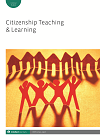
Full text loading...
 , Yaar Muhammad2
, Yaar Muhammad2
English textbooks in Pakistan are an important tool used by the state to construct pupils’ imagination of the time and space of the Indian sub-continent, Islam, Muslims and non-Muslims. This study used the qualitative content analysis method and analysed fifteen English textbooks produced by the state-managed institutions and provincial textbook boards. The analysis revealed Islam as the foundation of the imagination of time and space of Pakistan. This imagination of Pakistan found in textbooks negated the plurality of Pakistani society as the textbook authorities did not give any space to the minority groups (religious, ethnic and cultural) living in Pakistan. This study recommends that the textbook authorities include the often-ignored minority groups in the textbook discourses because the majority of pupils form their world-views and construct their imagination of Pakistan, its people and the world through these textbooks, which contribute to pupils’ construction of their national and cultural identity.

Article metrics loading...

Full text loading...
References


Data & Media loading...

Publication Date:
https://doi.org/10.1386/ctl_00092_1 Published content will be available immediately after check-out or when it is released in case of a pre-order. Please make sure to be logged in to see all available purchase options.